21 Most Beautiful Places In Croatia: Where To Visit & More

Croatia is a small yet vast country that leaves nothing to the imagination. It is jam-packed with so many beautiful places to visit. From medieval cities and pristine beaches to iconic filming locations, majestic islands, incredible national parks and much more, the country’s diversity is truly something else.
Having had the privilege of visiting sunny Croatia on numerous occasions, I can confidently say that the most challenging part is choosing where to start.
To help you plan your Croatian itinerary more easily, I’ve compiled a list of the 21 most beautiful places in Croatia to visit. This guide will help point you in the right direction when planning your dream trip.
Continue reading to discover the best places to visit in Croatia, organised by the most beautiful cities, towns, islands, and national parks.
Disclosure: This post may contain affiliate links that earn me a small commission if you use them at no extra cost to you.
Most beautiful cities in Croatia
1. Zagreb
Zagreb is Croatia’s capital and largest city. Although it is very cliche to start the list here, it is surprisingly often overlooked, with southern Croatia reaping in the majority of the crowds.
However, don’t let that notion swerve you out of the way of Zagreb! Its blend of rich history, fantastic old architecture and modern attractions gives you the perfect city-goer experience, which is no wonder it tops many lists as one of Croatia’s most beautiful places to visit.
Zagreb is split into two main parts – The Upper Town (Gornji Grad) and Lower Town (Donji Grad).
The Gornji Grad is the medieval side of the city where you’ll find its old stone architecture and attractions that were built around the 13th century. The upper town includes attractions like Stone Gate, the Church of St. Mark and the ever-popular Cathedral of Zagreb, located in the Kaptol area.
Its elegant and distinct design can be seen anywhere in the city, with its twin spires sticking out above anything!
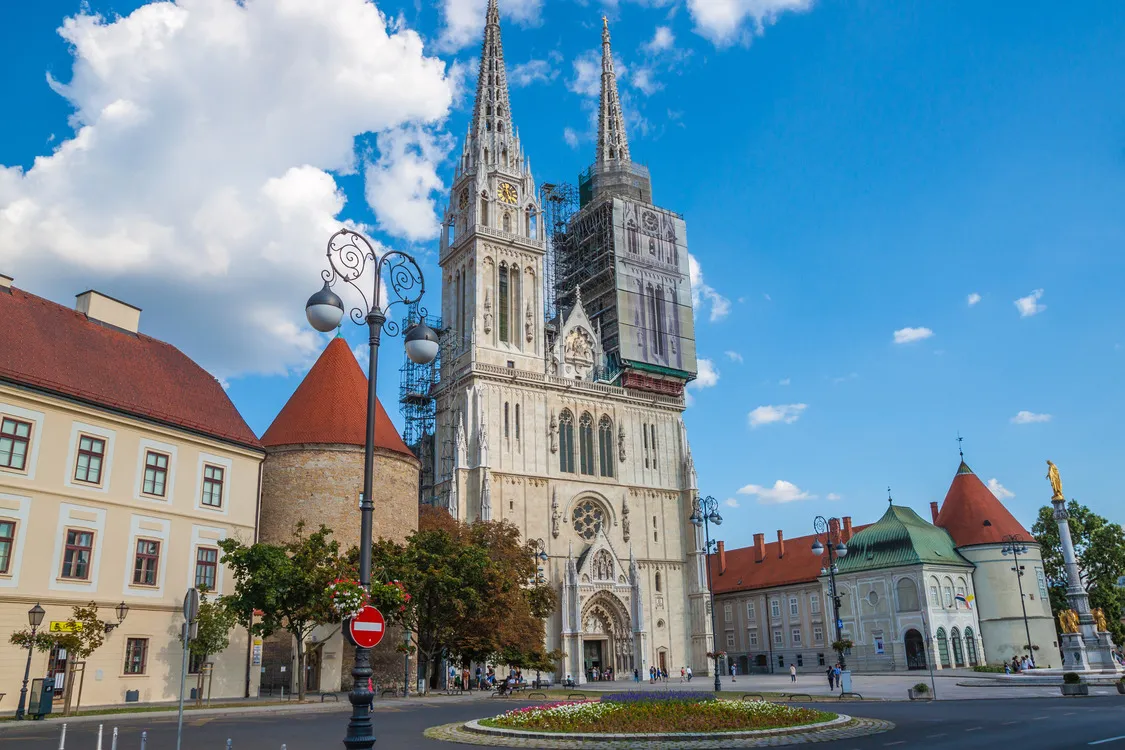
Other fantastic attractions in the Upper Town include the Lotrščak Tower and the Museum of Broken Relationships. Be sure to visit the tower at noon, where a cannon is shot off at the hour. This has been a tradition in Zagreb since 1877.
Then, make your way to the Museum of Broken Relationships, one of the most rare and unique attractions in Croatia. Inside, you’ll find mementos left from previous broken relationships, whether romantic or even a person’s relationship with food.
You’ll find many amusing anecdotes left next to each item!
On the other side of Zagreb, you have Lower Town (Donji Grad), the more bustling side that encompasses the capital and business side of the city. Much of this area feels very modern in comparison to the Upper Town.
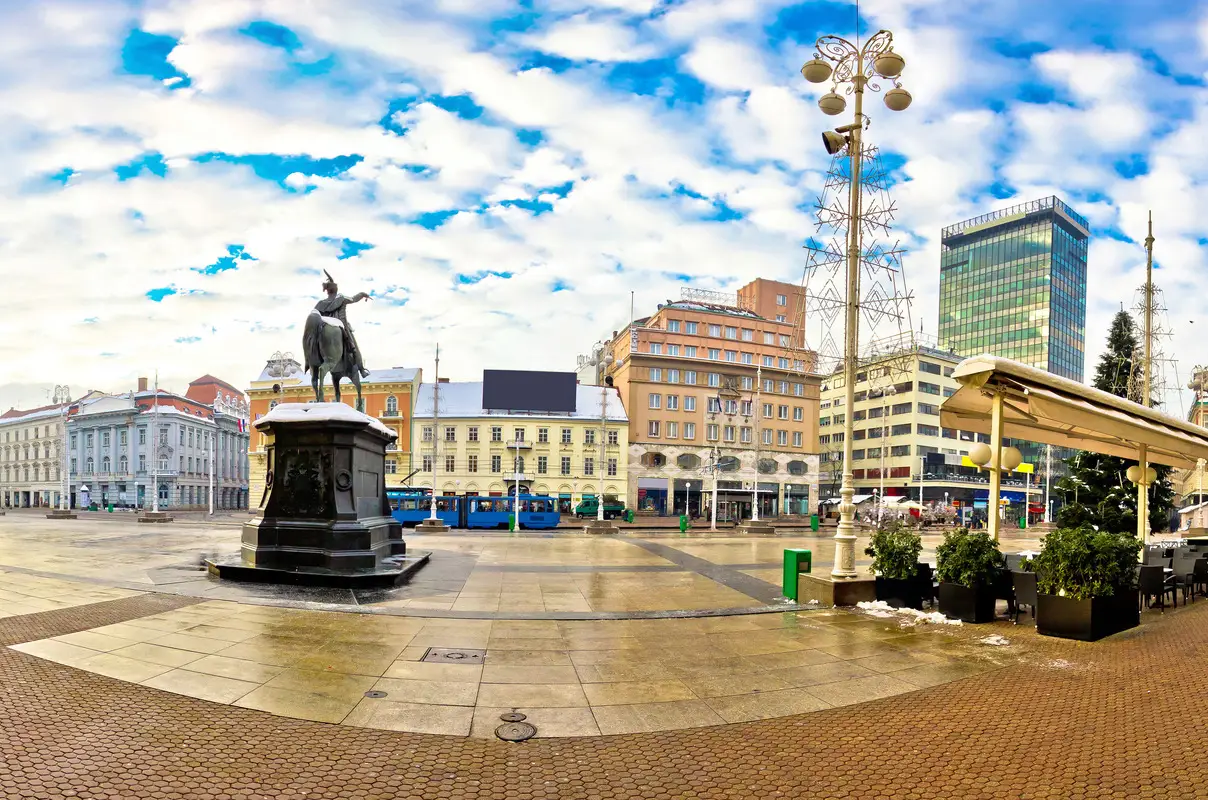
The area includes the city’s local parks, shops, public transport and modernised buildings with attractions like the Croatian National Theatre and the Art Pavilion.
Don’t miss a walk around the King Tomislav Square by the pavilion. This is one of Zagreb’s most popular public parks and a scenic place to have a little walk around or a spot for lunch.
2. Split
Split is Croatia’s second-biggest city and one of the country’s pretty gems, located along the Adriatic coast. It has an abundance of attractions and activities to do, suited to those who love a beach getaway and a massive cultural dive.
The city’s history dates back to Roman times. Visitors can travel through the city’s Roman history in the iconic monument, Dicocetian’s Palace. The palace was originally built by Roman Emperor Diocletian, a powerful military commander, who developed it into his grand retirement residence.
Don’t miss this on your visit to Split!
Explore the vast rooms around the Palace, like the Dicoceitan’s Residential Quarters and Temples of Jupiter. Be sure to walk along his eerie cellars, famously used as a filming location in Game of Thrones as the Dragons Lair Daenerys Targaryen kept her dragons.
Along the grounds in areas like the Peristyle, you’ll also find various Roman guard reenactments—don’t miss this when you’re there!
Recommendation: The Peristyle of Diocletian’s Palace is the best place to go in Split at night. It is open to the public, and people often come here with a glass of wine to sit and indulge in the sociable atmosphere.
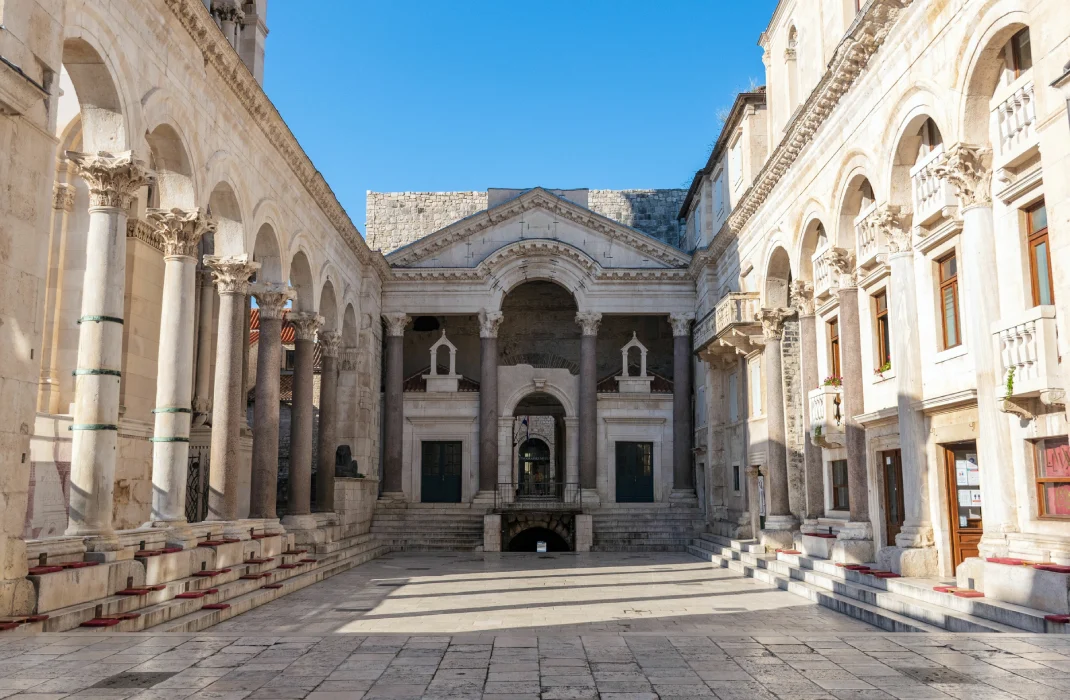
Once you’ve visited Dicloetian’s Palace, continue exploring the Old Town, heading to People’s Square, the main area of the Old Town.
This is a great place to find many restaurants or cafes for a food stop! If gelato is at your fancy, head to Gelateria aMare for some of the best gelato in town.
In Split, you’ll never tire of vantage points; it’s panorama heaven. Just west of the city centre, you’ll find a beautiful view of Split from Marjan Hill.
Start your journey from this starting point, making your way up on a 20-25-minute climb to the peak of Marjan Hill for some great postcard views of Split.
If that hike doesn’t sound enticing, the view from Saint Domnius Bell Tower inside the city centre will do just fine. Climb the 200 steps of the bell tower for one of Split’s best panoramas.
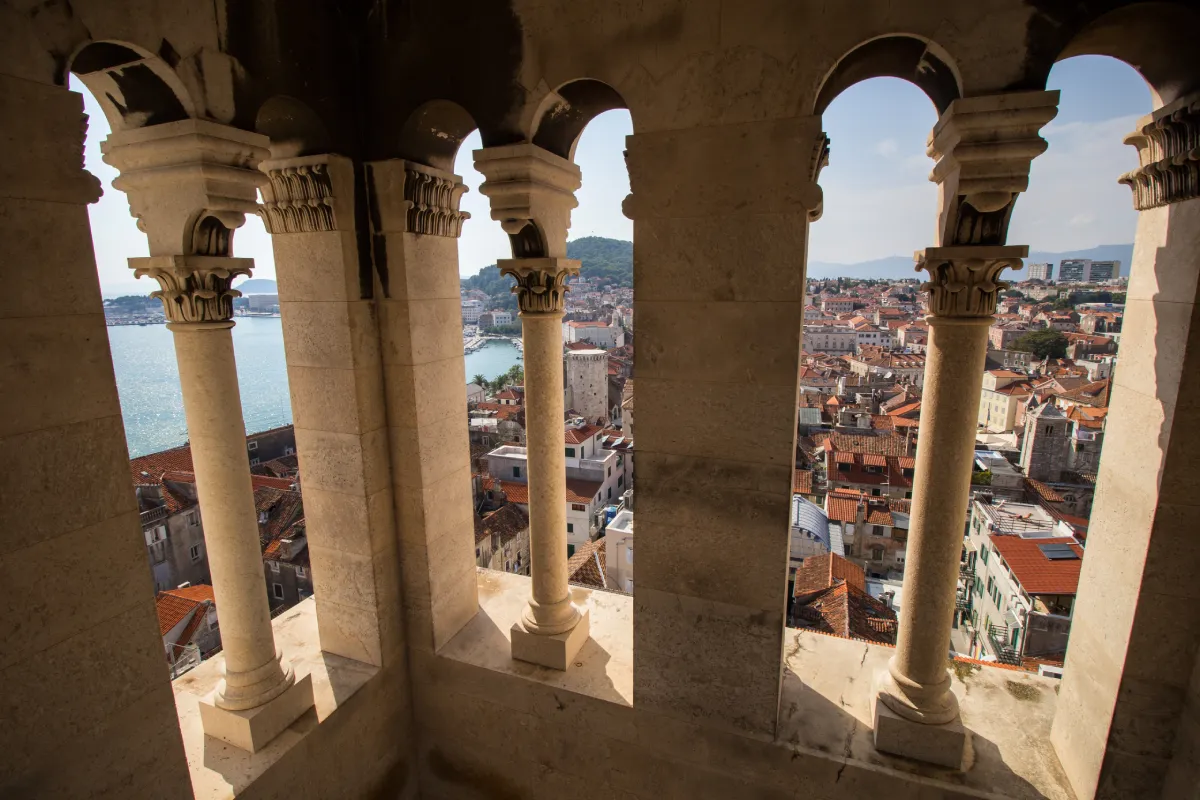
3. Dubrovnik
Dubrovnik is an absolute dream, often referred to as the ‘Pearl of the Adriatic’ due to its exquisite medieval city and stunning coastal features.
The Old Town of Dubrovnik is the city’s main prize – a UNESCO Heritage site that holds its own with its well-preserved medieval architecture, cobbled stone streets and unique attractions.
It is instantly recognisable to the world of TV fanatics for its inclusion in the TV series Game of Thrones, where it famously doubled down as the city of Kings Landing.
Read next: All Game of Thrones filming locations in Dubrovnik
One of the standout attractions in the Old Town is the fortified walls. The walls are around 1.9 kilometres long and 25m high, surrounding the entirety of the Old Town.
Visitors can walk along the walls, which is the best way to experience Dubrovnik. The walk takes over 1.5-2 hours to complete leisurely, and you can enter and exit via three different entrances if you don’t want to experience the whole thing.
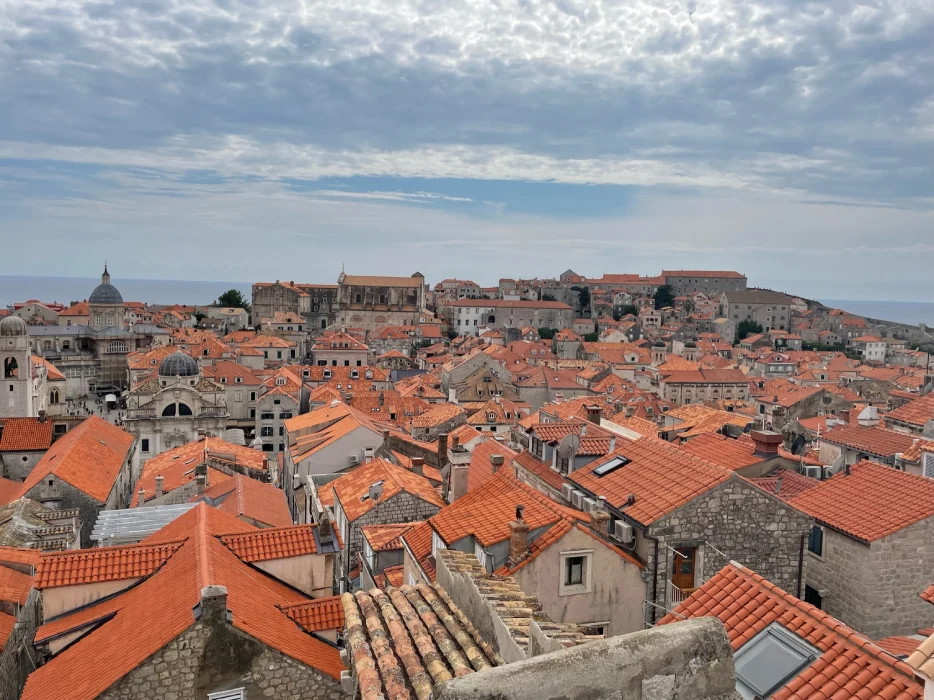
Check out my first-time visitor’s guide for all my tips and recommendations for Dubrovnik.
While the walls remain the talking point, Dubrovnik has plenty more brilliant attractions to visit inside the Old Town, like Rectors Palace and Dubrovnik Cathedral.
Plus, don’t miss the iconic Stradun, the area’s main walkway lined with shops and restaurants, your go-to area for a souvenir. You’ll find it as you walk through Pile Gate.
Once you are done in the Old Town, take the cable car up Mount Srd to find one of the best panoramas of Dubrovnik. Bring a camera and take the perfect snapshot of the bright terracotta rooftops and views of the Adriatic Sea from afar.
On Mount Srd you can also find Restaurant Panorama. Here you can dine in style while soaking in those lovely panoramic views of Dubrovnik!
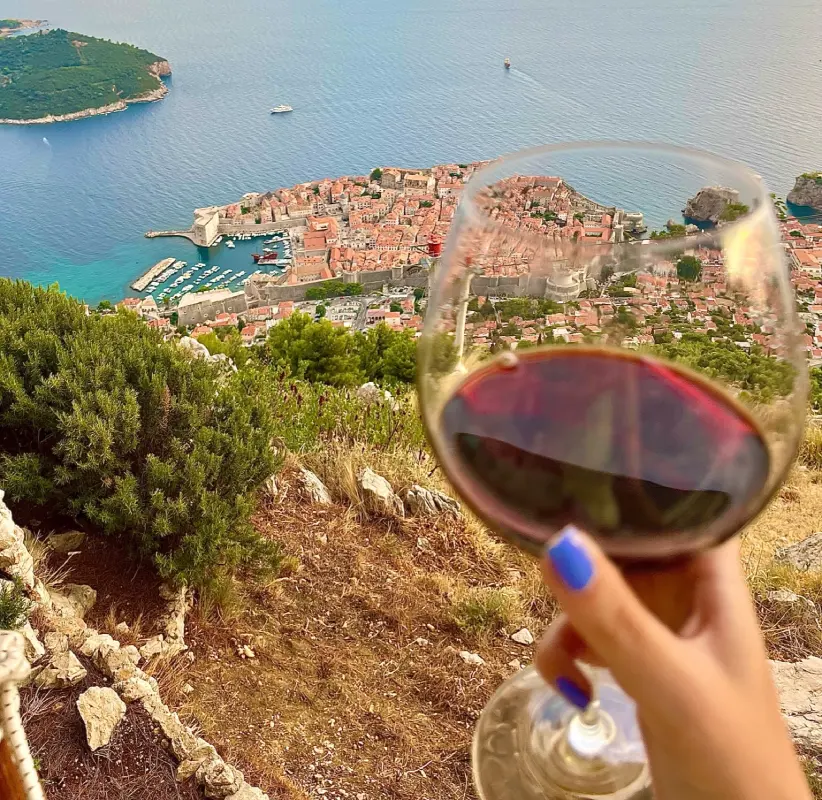
Dubrovnik is also well-connected to many major towns and cities in Croatia. Being a port city, it can travel anywhere nearby with a harbour.
Day tours are readily available from the main and Old Harbour, including a highly recommended trip to the tranquil island of Lokrum.
Planning a day out to Dubrovnik? Check out my one day Dubrovnik itinerary
4. Rovinj
Rovinj is located in the western region of Croatia, just on the Istrian Peninsula. In recent times, Rovinj has become one of Croatia’s most sought-after cities, blown up exponentially through like-minded tourism and a huge social media presence.
One of Rovinj’s huge talking points is the Old Town. It wasn’t until the 18th century the Old Town became connected to the mainland, where it used to be an island, and the gap between the mainland and the island was filled.
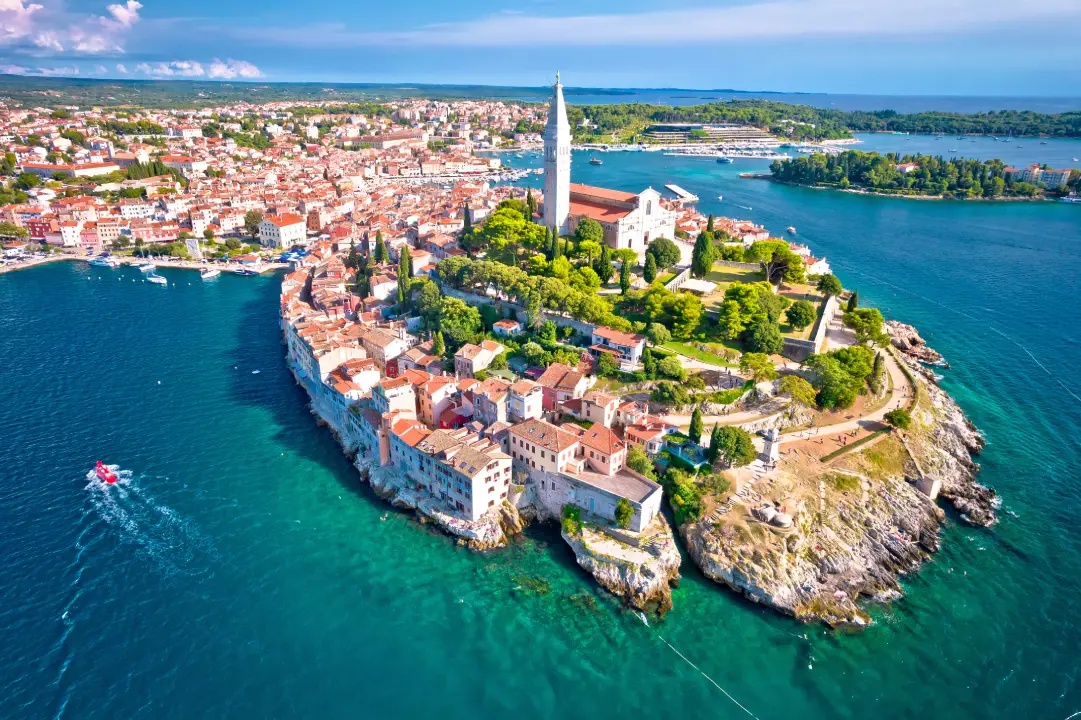
Recommendation: I recommend visiting Rovinj in the off-season to avoid large crowds in the summer because tourism has skyrocketed in the last few years.
Rovinj’s Venetian-styled buildings originated from the era in which the city was ruled by the Venetians and the architectural features from their rule have been well preserved.
As you walk around the streets, you’ll feel almost like you’ve teleported into a small Italian town.
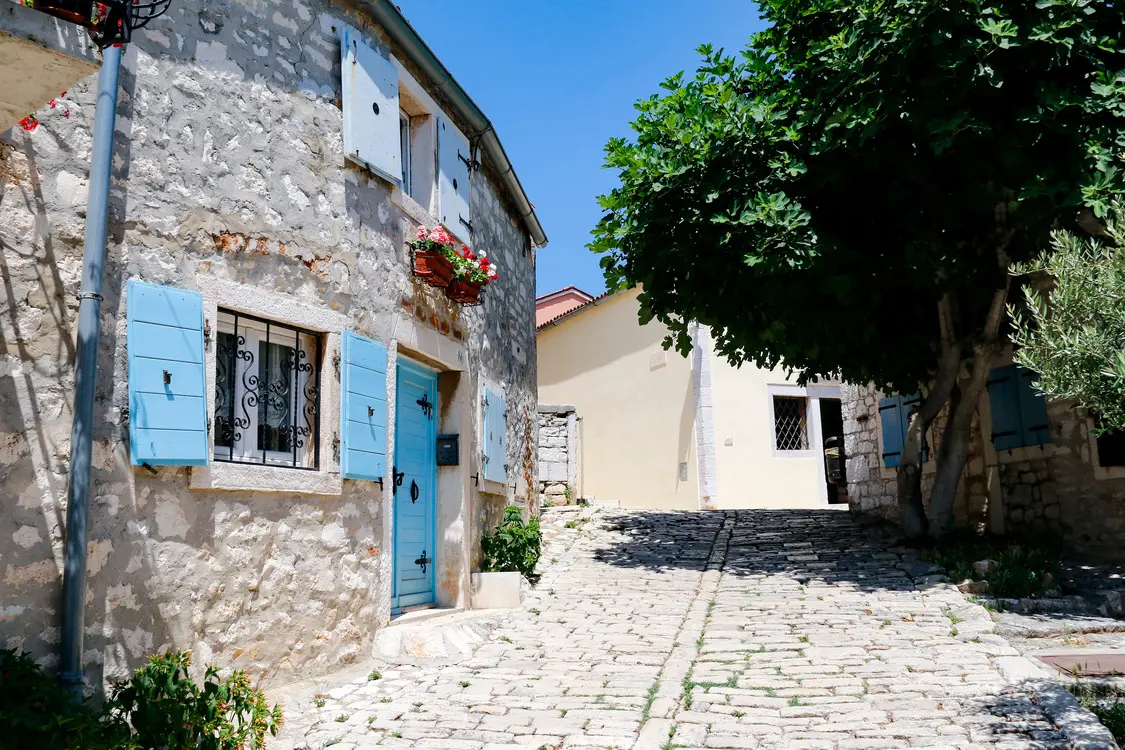
While you walk around the Old Town, head up towards St. Euphemia’s Basilica, the city’s highest point. Climb the 192 steps up the top of its bell tower for a fantastic panorama of Rovinj and the coastline.
Next, head to the city’s main square, Maršal Tito Square. To the side, you have cafes and restaurants alongside old Austrian architecture built during a time when Rovinj was under Austrian rule. With the square opening up to the harbour, this is one of the most scenic places to sit down to Istrian cuisine or try the city’s famous white wines like Malvasia.
From the harbour, St. Catherine’s Island can be seen in the distance, and there are many beautiful beaches on the island if you want to enjoy the coastline.
5. Zadar
Zadar is another one of Croatia’s most beautiful cities on the Dalmatian coast. It’s a city that bears many traces of its period under the Roman Empire.
Zadar’s Roman heritage has been well looked after by locals, with Roman monuments scattered throughout the Old Town, particularly at the Roman Forum, which is one giant Roman Ruin.
Although Roman history is embedded in Zadar’s current state, the town’s Byzantine and Venetian eras are also evident. Adjacent to the Roman Ruins is the Byzanite-built Church of St. Donatus, one of the most notable landmarks in Zadar.
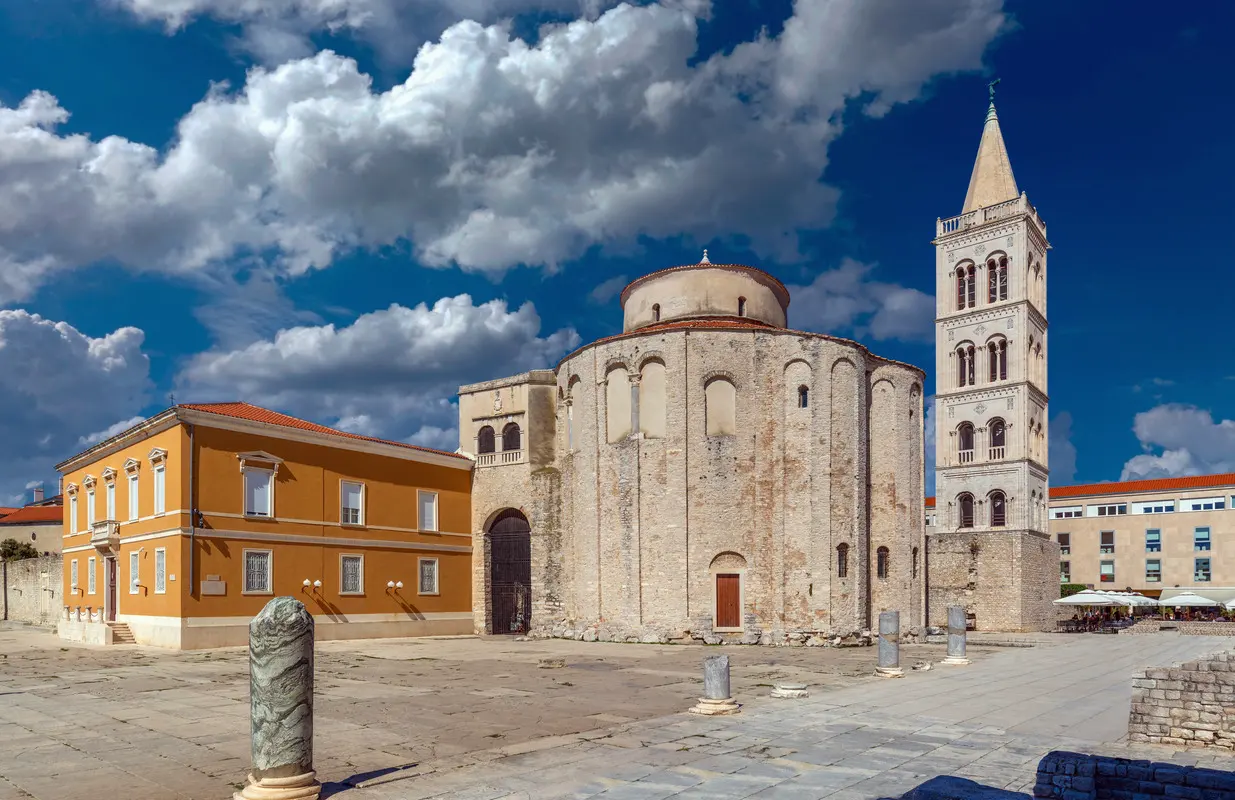
You’ll continue to find many more fantastic treasures as you venture around the Old Town. Be sure to head to the Cathedral of St. Anastasia and head up the bell tower for a stunning panorama of the city.
Moreover, Zadar’s secret charms are the attractions along the coast – designed by Croatian architect Nikola Bašić. One of his creations, “The Sea Organ”, creates sounds from the waves of the Adriatic Sea bashing through a series of underwater pipes, hence the name…The Sea Organ.
Another is The Greeting to the Sun, just a stone’s throw away from The Sea Organ. This is like Zadar’s very own homemade disco built by science. The solar-powered glass plates produce a light display through retained solar energy that sparkles up the area.
A perfect place to visit during sunset to dance the night away!
6. Pula
Pula is another fantastic coastal city in Croatia. It is located on the southern tip of the Istrian Peninsula and is the largest city within Istria County.
There is no hiding that Pula has been heavily influenced by the Roman Empire, showcasing impressive Roman Ruins all throughout the city.
The most famous is Pula Arena, one of the sixth largest arenas in the world, measuring up to 132m high and built entirely with local limestone.
Pula Arena can be explored on a self-guided tour or through watching a live performance, with concerts and theatre productions held at the arena on a frequent basis.
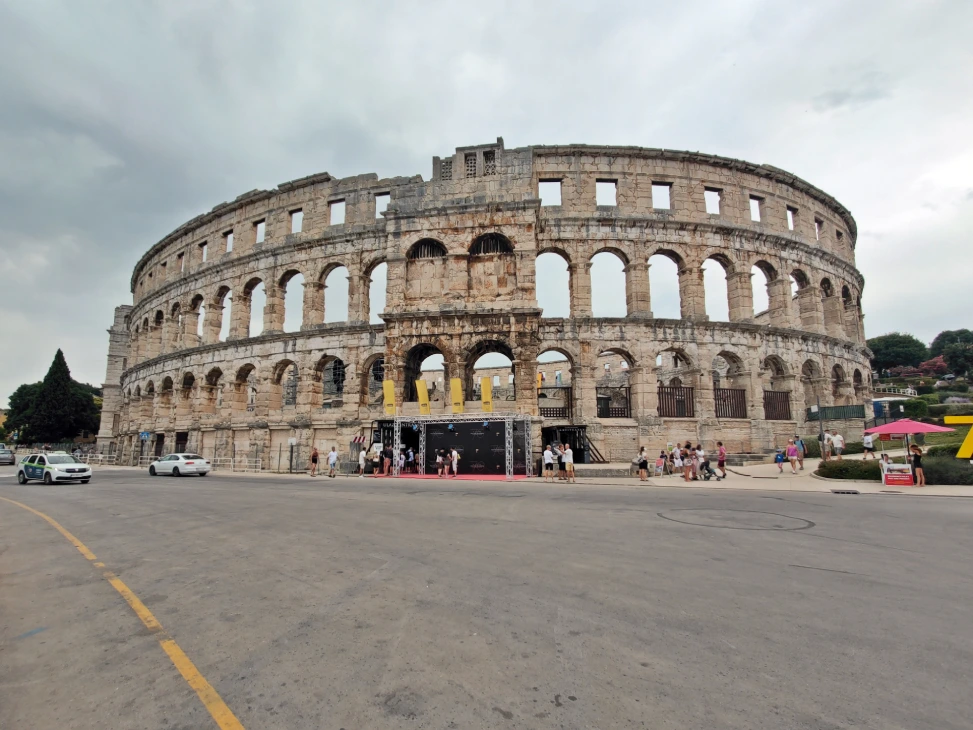
Once you have visited the arena, you can continue your Roman tour of Pula by visiting the Temple of Augustus and the Arch of the Sergiil. The Temple of Augustus holds various findings of ancient monuments – perfect for those who love timeless history.
Then, after a long time of exploring Pula’s monuments, cap off your time with a picturesque panorama of the city at Pula Citadel, overlooking the Pula Arena, city harbour and much more!
7. Šibenik
Šibenik is a coastal city located right in the heart of the Dalmatian region along the Adriatic Sea.
Whether you come for Game of Thrones, nearby national parks, or hunting for Croatia UNESCO Sites, the city of Sibenik has it all for those looking for the next best destination in their Croatian itinerary.
Little trivia: Šibenik is the only city in the Dalmatian region to have been founded by Croats.
There’s plenty to explore in Šibenik, with its real heart located right in its medieval Old Town. Find yourself getting lost through the narrow streets, passing various old stone buildings.
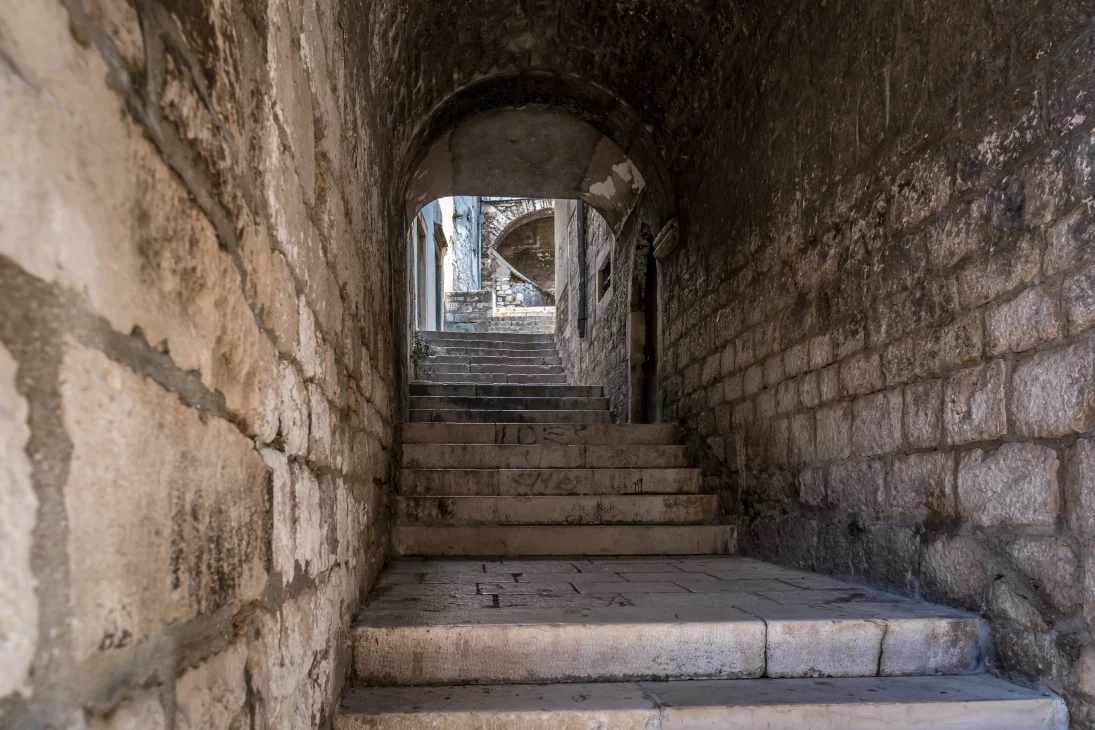
While you walk around, be sure to visit the Šibeniks main attraction, The Cathedral of St James, a fine show of well-preserved medieval architecture built entirely from stone.
Be on the lookout for the 71 sculptured faces embedded all around its exterior, all depicting people from the 15th and 16th centuries.

Over the course of history, Šibenik has been a massive powerhouse in defence, fighting off many empire invasion attacks from its impressive defensive fortresses. Around the city, you’ll find four: St. Michael’s, Barone, St. John’s and St. Nicholas Fortress.
While they are all worth visiting, St. Michael’s Fortress takes the cake with the added bonus of a fantastic panorama of the city. With a stage on site, visitors can also come here for a concert and theatre performance. They are most memorable during sunset!
8. Varaždin
Varaždin is a small city located in the northern region of Croatia, famous for its beautiful Baroque architecture and highly rated Old Town.
Prior to the 1776 fire that demolished over 80% of all buildings in the city, Varaždin was Croatia’s capital for a short stint before having to move administration back to Zagreb.
Today, a lot of Varaždin beauty lives in the heart of its fantastic, well-preserved Old Town. To each corner, you’ll find its Barqoue-styled buildings, charming squares and various iconic monuments.
King Tomislav Square is the heart of the Old Town, with plenty of cafes and restaurants nearby. Here is where the City Hall is located.
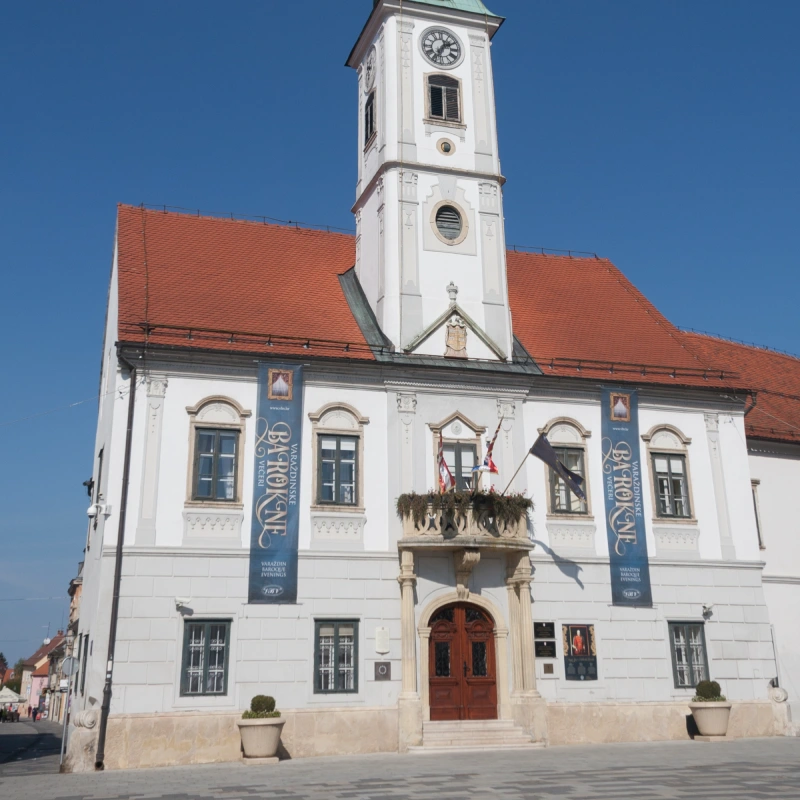
Little trivia: Every Saturday, from April to October, a Varaždin Civil Guard from the Purgari stands by the city hall – a culture that has existed in the city for over two centuries.
To see the Purgari more in action, head to Varaždin Citadel. Every Saturday, the civil guards perform a guard change ceremony just outside the citadel, followed by a cannon shot.
Whilst at the citadel, don’t miss out on exploring the Varaždin City Museum. Inside are various artefacts from Varaždin’s history, including weapons, pottery and furniture, all previously used by locals across centuries.
In late August, Varaždin also hosts one of Croatia’s most vibrant events, Špancirfest. Those across the country come for great food and to watch street performers, musicians, and artists take to the streets in a 10-day spectacle.
Most beautiful towns in Croatia
9. Makarska
Makarska is a port town in the Makarska Riviera region of Croatia, cornered in by the Biokovo Mountain range and the Adriatic Sea. With relaxing beaches, sightseeing attractions and ever-rewarding hikes, this Croatian Town has so much to do to suit anyone’s itinerary.
The town’s most iconic features are located on the coast, with a trip to the Makarska promenade an instant hit among visitors. Makarska promenade stretches almost 4.7km from the main Makarska town to the Ramova beach, so get ready for a bit of hiking!
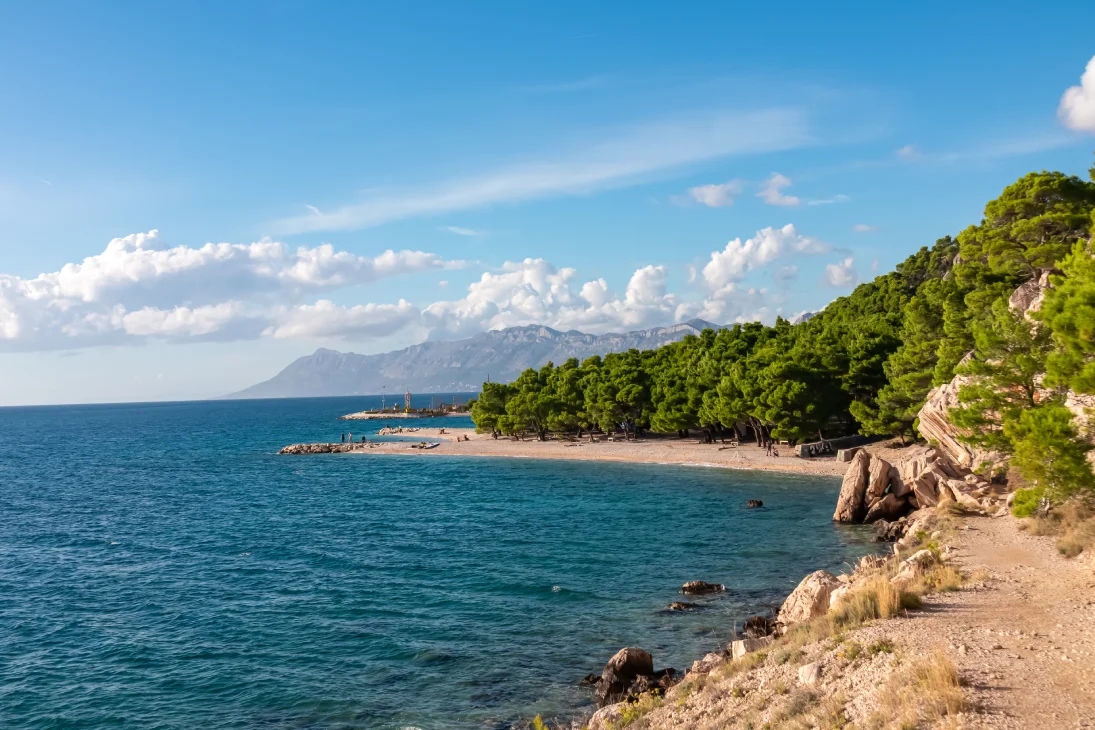
But don’t worry, you’ll encounter endless beaches on the 4.7km walk, including the ever-popular Donja Luka.
Just a few minutes away from Makarska’s promenade is the Old Town. The area is very Croatian in feel, with evident Dalmatian architecture all through the town’s narrow streets.
Key recommendation: Head to Kacic Square and go inside St. Mark’s Church.
Though Makarska is set up for a relaxing stay, hikes are right at its doorstep. For beginner hikers, Osejava Forest Park is your go-to option, with several foresty pathways that take you all around the peninsula and include many beautiful panoramas on the way.
For experienced hikers, Mount Biokovo Nature Park is the best choice. You can explore the Dalmatian region’s highest mountain range with many hikes to choose from.
It is also worth noting that Makarska is a brilliant base for further exploration around the country. Brac and Hvar are nearby. Makarska is also situated between Split and Dubrovnik if you are looking for a place to stay on a road trip around Croatia.
10. Cavtat
Cavtat is a picturesque small coastal town located atop a hill in the Konavle region. it is often used as a base to explore Dubrovnik’s Old Town.
Though Dubrovnik is on the agenda, it is often found that those who take time to experience Cavtat leave in complete awe, labelling it as one of Croatia’s top hidden gems.
To start your venture in Cavtat, wander around the Old Town and head to various attractions, including the Mausoleum of the Račić Family, up in the hills of Konavle. The Mausoleum was built to commemorate the rich family of shipbuilders that used to live here, created by Croatian sculptor Ivan Meštrović.
While in Cavtat, be sure to walk around the promenade, one of the most scenic areas in Cavtat, encircling the peninsula. Stop off at the famous arches during your walk.
This is a perfect setting up with a lovely backdrop outlooking the Adriatic – An Instagram-worthy picture for your feed!
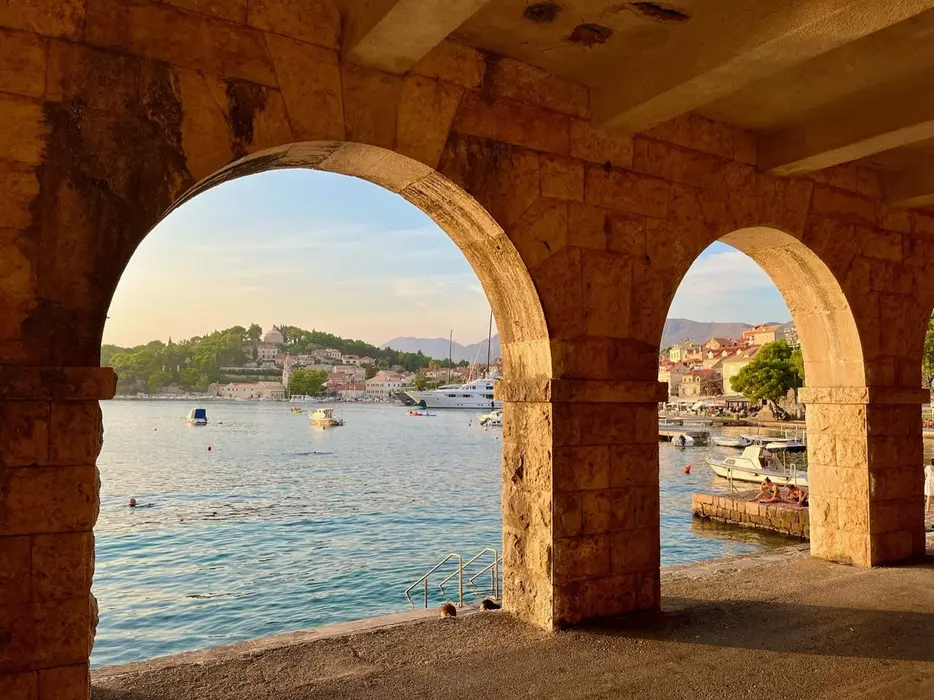
Around the peninsula are also various walking trails to explore the beautiful surrounding areas.
Recommendation: I highly recommend going on the Sustjepan Hiking Trail during dusk. It’s a lovely walk with the added bonus of a great sunset view of the Adriatic Sea.
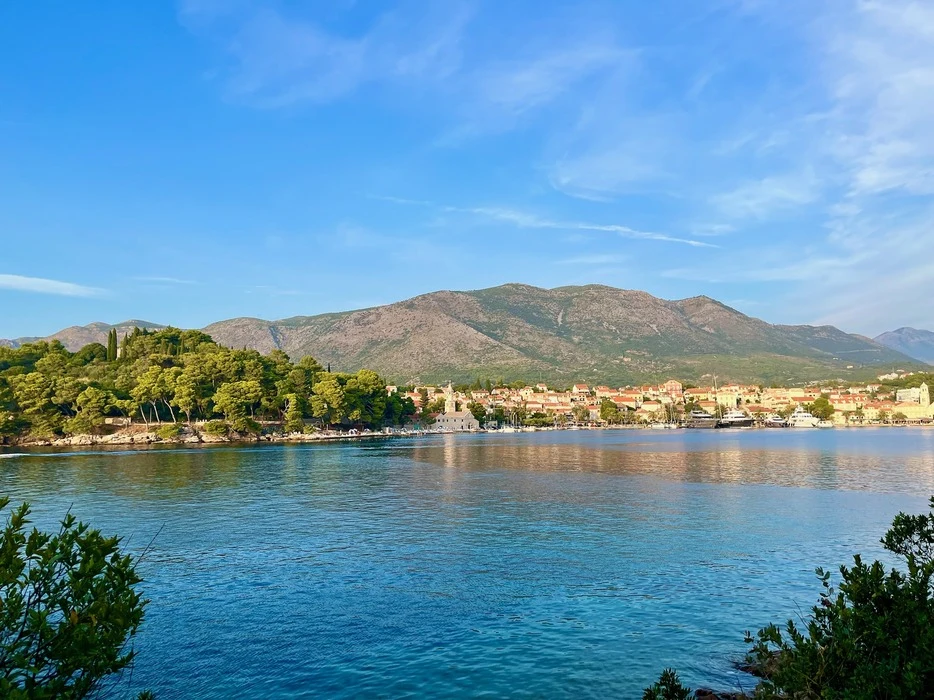
And while Dubrovnik grabs the headlines for its beaches, Cavtat’s coastlines are just as dreamy and a whole lot more under the radar to avoid the bustling crowds in the Old Town.
Beach Žal is Cavtat’s most popular beach, perfect for families or couples, with various water activities, beach bars, and amenities on site for a long coastal day out.
Visiting from Dubrovnik? Check out my Cavtat guide.
11. Motovun
Tucked away in the hills in central Istria overlooking the Mirna River valley, Motovun is a beautiful little Croatian town with a close-knit community of less than 1000 people.
The entire town is very striking in Italian exterior, with the Venetian influences apparent through its architectural features that have remained present since the Venetian rule over Motovun.
During their rule, the Venetians fortified the town, building an impressive stronghold surrounding the Motovun castle. Don’t miss out wandering around the castle walls!
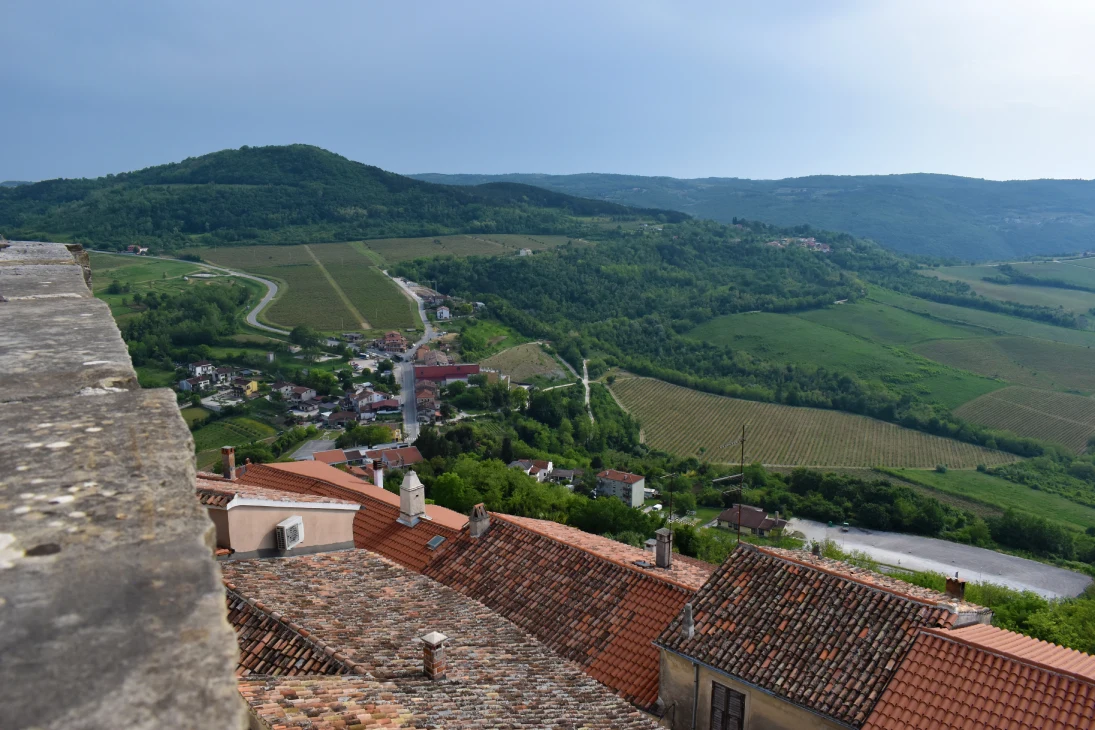
In Motovun, explore the old medieval town and visit the historical town gates. The best place to eat with a view in Motovun is Bistro Bar Montona Gallery next to the twin gates. The views of the vineyards are breathless accompanied by some of the best food in town!
Recommendation: I recommend trying out the truffles here, which are integral to Motovun’s food traditions.
While exploring the Old Town, be sure to visit the main hub, Andrea Antico Square. This is where St. Stephen’s Church is located, and adjacent to it is its Venetian-styled bell tower. For a fee, visitors can climb the bell tower for panoramas across the entire Old Town.
Lastly, don’t miss the opportunity to hunt for your own truffles. In Motorvun forest, visitors can go truffle hunting with an experienced guide to find black and white Istrian truffles, paying homage to the town’s traditions.
12. Trogir
Trogir is one the most beautiful coastal towns on the Dalmatian Coast, just 30 minutes west of Split. The town has been recognised as a UNESCO site because of its magnificent medieval architecture, which has been labelled one of the best in Central Europe.
To begin your architectural spotting, head to the town’s main church, The Cathedral Of St. Lawrence. Churches are impossible to miss within the Old Town, boasting a huge collection of 10, all seemingly scattered at every corner of the town – with St.Lawrence taking the cake as the best pick.
Take your time to explore the building. The Romanesque, Gothic, Renaissance and Baroque architectural designs are all on display in this 13th-century church, opening up with the grandest entrance in Radovan’s Portal.
The Cathedral of St Lawrence also has its very own bell tower. The fee to go up there is 100% worth it. You won’t want to miss those post-card panoramas from the top, showcasing Trogir’s terracotta rooftops and harbour – Simply the best view in town!
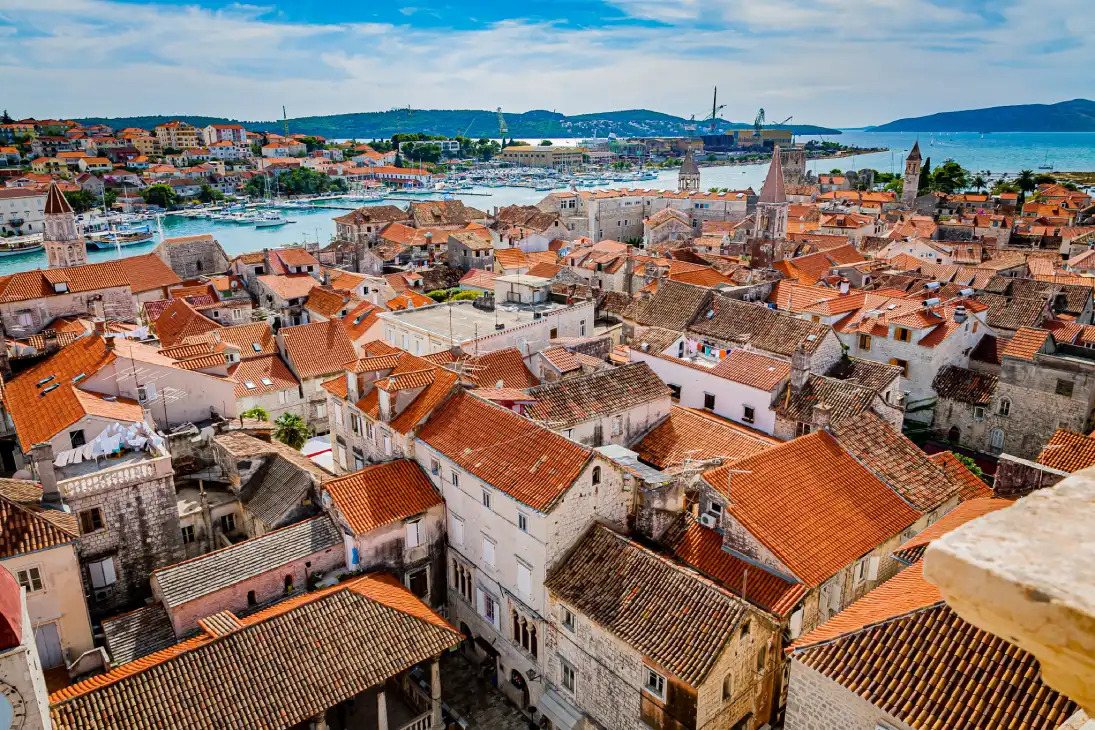
Be sure to look out for Cipiko Palace, which is just a stone’s throw away from the church. Though the residence of the Cipiko family isn’t available to enter, it has beautiful Venetian Gothic architecture that’s worth admiring.
Next on your Trogir itinerary should be a visit to Kamerlengo Fortress and promenade. The fortress is a great structure, but the highlight is the panoramas of Trogir promenade.
Plus, the promenade is a sunset dream! Lined down the promenade are large, tall palm trees and benches with unmissable views of the harbour.
Most beautiful islands in Croatia
13. Hvar
The vibrant, sunny island of Hvar should be on everyone’s Croatian bucket list.
The combination of bustling nightlife, pretty towns, and beautiful landscapes merged into this tiny island of the Adriatic Sea attracts celebrities, hikers, and party-goers alike, all of whom come to see its breathtaking features.
Life in Hvar begins right in the heart of Hvar Town, drawing in heavy crowds throughout the year for its iconic nightlife and stunning architecture. Take a walk through the town’s main centre, along the promenade and seek out the main architectural buildings like St. Stephen’s Cathedral.
Then, from the cathedral, follow the signs from St Stephen’s Square up to Fortica Fortress, the island’s 16th-century fortress.
Head up to the very top for some of the best views in Hvar – grabbing those far-distance panoramas of the terracotta rooftops of Hvar Town and the Pakleni Islands in the far distance.
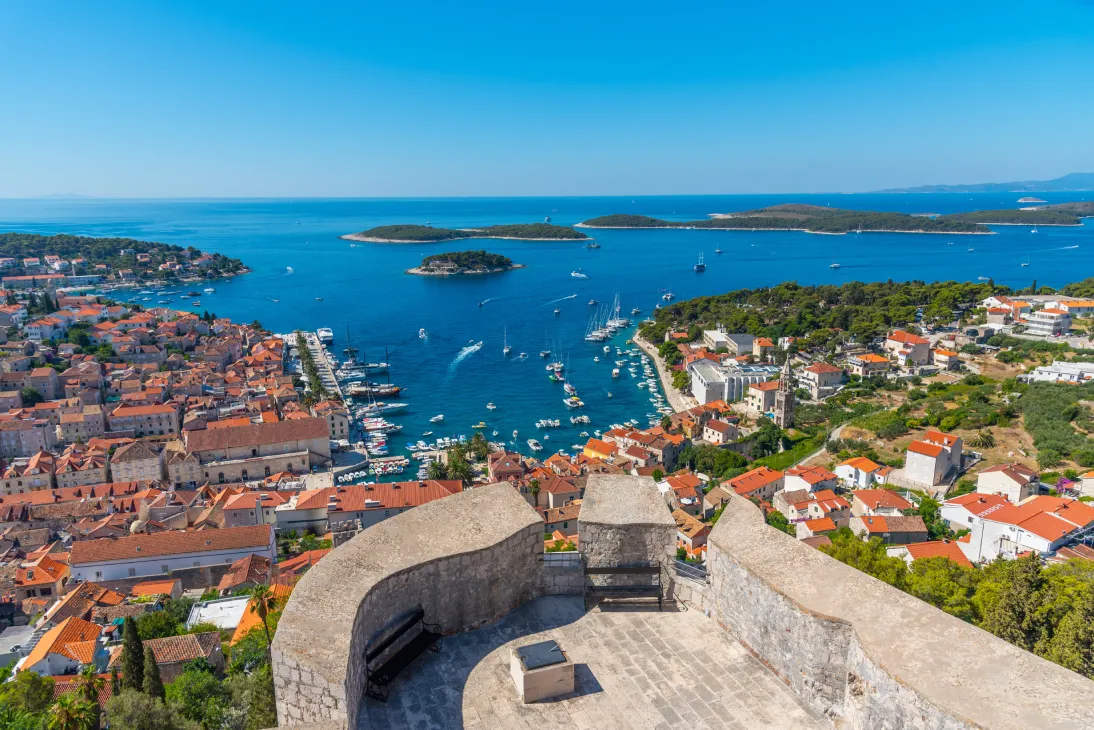
Among all the sightseeing and glitz, Hvar boasts an incredible nightlife. You’ll find some of the best clubs and bars in Croatia. Whether you like to party in luxury or drink on the cheap, Hvar has your night planned, set and ready.
Carpe Diem is Hvar’s most expensive bar. It hosts themed night events and is a well-known location for celebrities to party. Booking a VIP table can cost up to €1000 minimum!
On the other hand, bars like Kiva and Sidro offer a more budget-friendly night out for those who don’t want to break the bank.
Though days and nights spent in Hvar are wonderful, there are many lovely surrounding areas to head to for a day out. Head out of the port of Hvar to the Paklinski Islands!
The archipelago has various beaches like Zdrilca and Mlinito, where you can enjoy swimming or snorkelling. Boats can also be rented on Hvar so you can enjoy the islands at your own leisure.
14. Korcula
The island of Korčula is one of natural beauty, located in Southern Croatia just off the coast of the Adriatic sea. Korcula is often remarked as the ‘Little Dubrovnik’ for its uncanny resemblance to the popular city, from its fortified walls and charming medieval Old Town.
The island is often considered one of Croatia’s biggest hidden gems, attracting far fewer tourists than other islands in Croatia.
Korčula’s central hub is in the Old Town, where you’ll find its resemblances to Dubrovnik from its Venetian-styled architecture and red-roofed buildings, all surrounded by fortified city walls.
In the Old Town, be sure to head to St Mark’s Cathedral, a beautiful Gothic-Renaissance-style church which is free to enter during the time of mass.
For an extra fee, you can climb the bell tower for a panoramic view of Korcula’s Old Town and Riveria.
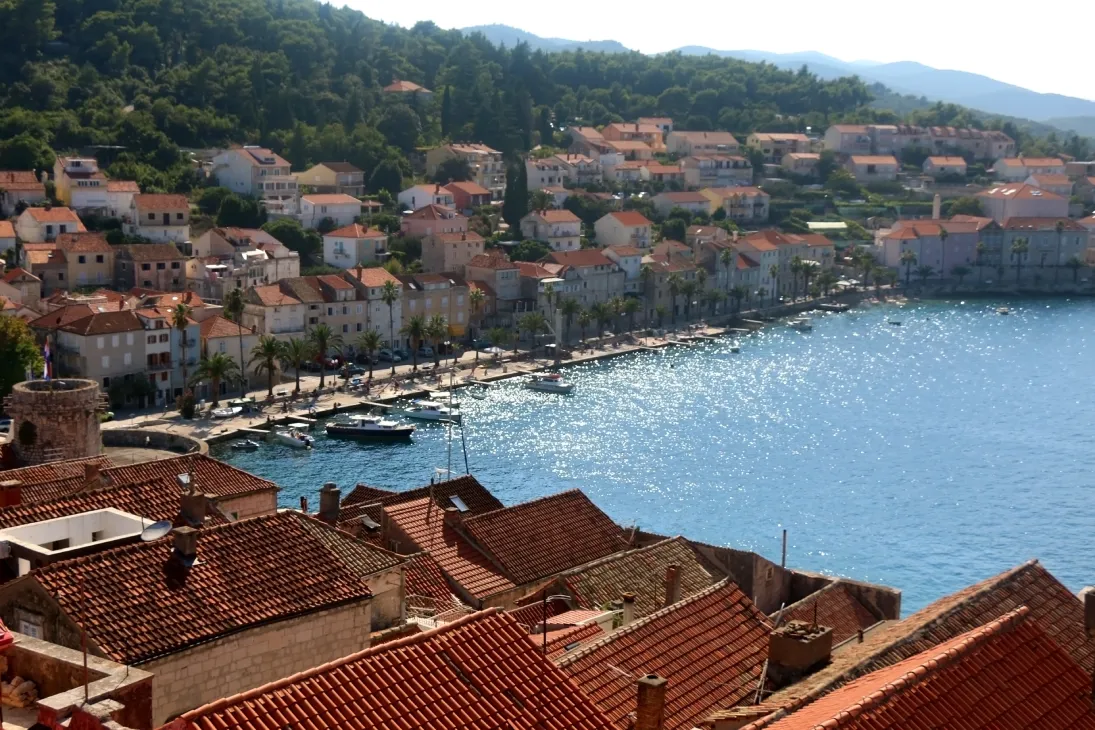
Inside the Old Town are Korcula’s other main attractions like the Marco Polo House, Marco Polo’s alleged birthplace or Korčula Town Museum, where you can dive into the island’s maritime history.
The sightseeing and medieval Old Town are just the tip of the iceberg. Korcula has various outdoor activities and moments to relax throughout your stay.
It has a beautiful coastline! Along the Peninsula’s coast, you can find the white beaches of Pupnatska Luka, Vela Pržina, and Bacva. There are plenty of opportunities to rent kayaks, snorkel in the clear waters, or even go windsurfing here.
Korcula is also iconic for its gastronomy and wine production. Wine enthusiasts can join a wine tour of the island to visit various vineyards and taste-test their way through Korcula’s wine history.
15. Vis
Vis is Croatia’s farthest inhabited island, located off the Dalmatian coast. As it is situated further away from the mainland and off the beaten path, it is often less visited compared to nearby islands like Brac, Hvar, and Solta.
However, the isolated and unspoiled nature of Vis is paramount. It is home to some of the most pristine beaches in the region and can be best enjoyed without the crowds.
The iconic Stiniva Beach is one of the top choices for beaches on the island and was voted one of the most beautiful in Europe.
It sits in a small cove, surrounded by limestone cliffs with a long stretch of white pebbles. Many people choose to enjoy there time here by either relaxing or cliff diving from the cliffs into the blue turquoise waters.
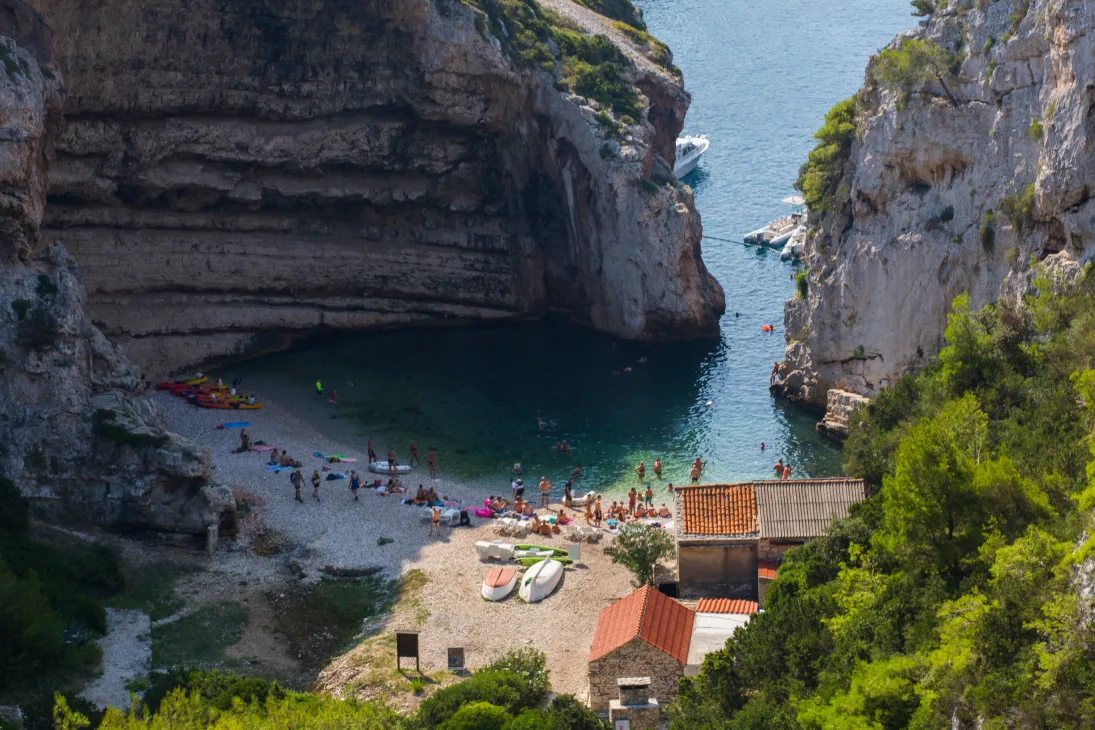
Note: You will need to hike down to Stiniva Cove or you can take a boat tour from Vis town or Hvar. Proper walking shoes are needed if hiking is your choice!
Srebrna Beach is a brilliant alternative for a more accessible beach. It’s one of the quieter coastlines and is appropriate for both kids and adults. There is enough shade for those who want to relax out of the sun’s reach.
For your sightseeing fix on Vis Island, explore the streets of Vis Town and Komiža. Head to the ferry harbour of Vis Town and see what was famously used as a filming location in Mamma Mia 2. Or walk around Kut Village and see the town’s stone buildings and local taverns.
The best way to experience Komiža is through a quad biking tour. You’ll quad bike through Komiža while visiting various places on the island on the way, including ex-military bases, and head to Mount Hum, the highest point on Vis Island, for panoramic views of the surrounding areas.
16. Brač
Brač is one of the most beautiful islands in Croatia, famous for the location of the iconic Zlatni Rat Beach. It is the nearest Adriatic Island to the mainland of Croatia and only a 50-minute ferry ride from Split.
The island of Brač has an array of activities to suit every kind of traveller. For hikers, there are numerous hiking trails to choose from
Start with an ever-rewarding hike up Vidova Gora, the highest peak in the Adriatic islands. It takes roughly 1.5-2 hours to complete the 778m ascent, finishing off your walk with gorgeous views of the Adriatic Sea.
Hvar, Vis, and Korčula can be seen from the peak. So be sure to bring those binoculars!
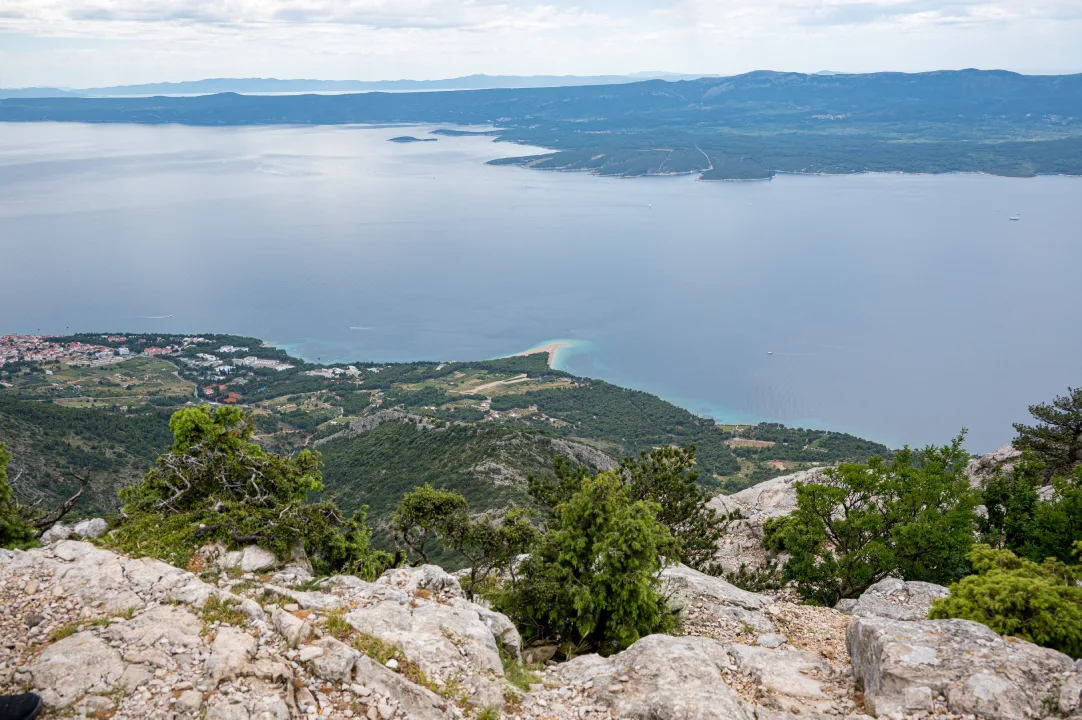
Just under the Vidova Gora mountain, you have the lovely little town of Bol. It is perfect for walking around day and night, with nighttime falling, the picturesque marina is softly lit and there are many quaint little restaurants and bars nearby.
Of course, no visit to Brac Island would be complete without heading to Golden Horn Beach (Zlatini Rat), just a 25-minute walk away from Bol town.
Note: Contrary to popular belief, Zlatni Rat is a pebbled beach. However, it is still comfortable to lie on and has a wide, expansive area, so you will find space to pop a towel down, even in peak summer.
Experience it in your own way, whether you’re the relaxing type or an adrenaline junkie. Relaxing is always possible, but if you prefer the thrill, water activities like windsurfing and kitesurfing are popular activity choices because of the beach’s wind patterns.
17. Mljet
The Dalmatian island of Mljet is the perfect retreat for any travel enthusiast. It boasts an incredible national park, scenic hiking trails, beautiful lakes and much more to fill an ever-busy itinerary.
Key Note: Mljet is one of the best day trips from Dubrovnik due to its close proximity and many fun day activities.
Mljet National Park is the island’s biggest attraction, covering almost half of the island along the western side. Visitors will need to purchase tickets to enter the National Park, with extra activities available at an additional cost.
The national park is a real hiker’s haven! You have an extensive number of walking trails to pick and choose from.
For a hike with a beautiful end viewpoint, start from the village of Pomena and ascend to the top of Mt.Montok. It takes about 3-4 hours to complete and is much worth the trip up for those views!
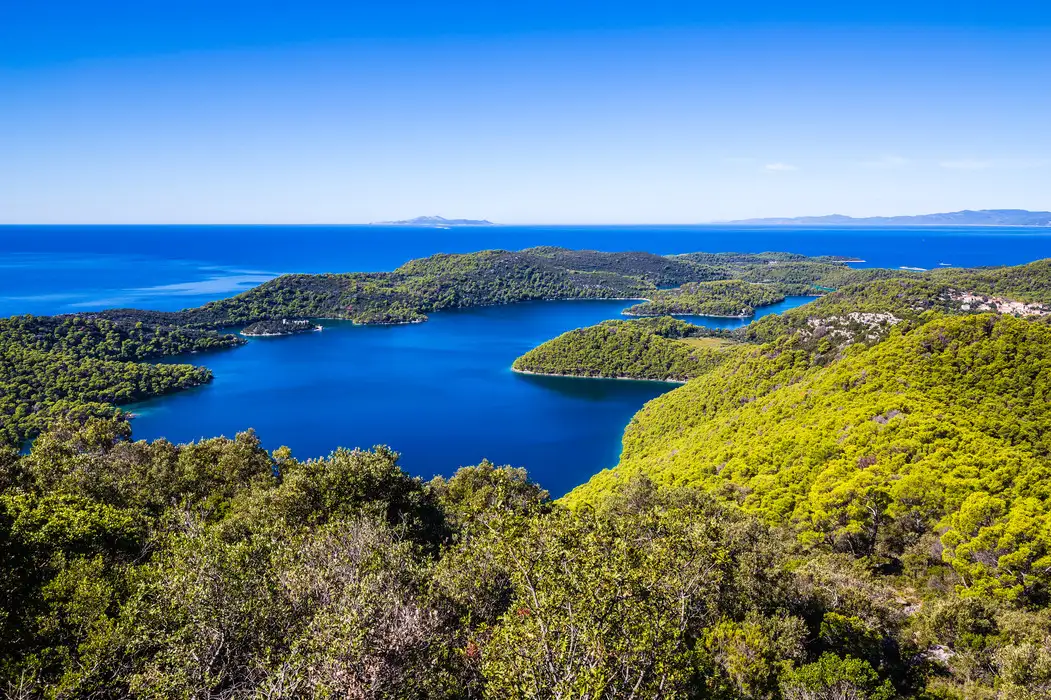
Explore the best of the national park by foot by finding various forest trails around Veliko and Malo Jezero (Large and Small Lake), where you can walk back and forth to the lakes and pass the village of Pomena on the way.
On your visit to the national park, I recommend taking a short boat ride to St Mary’s Island from Pristaniste or Mali Most. Alternatively, you can rent a kayaking boat from either Mali Most or Pomena to get there yourself.
St Mary’s Island is just a small islet and easily walkable. On the islet, you’ll find the Benedictine monastery, an old Romanesque church. Just nearby is also a park and a restaurant, perfect for a short stay to rest from your hikes.
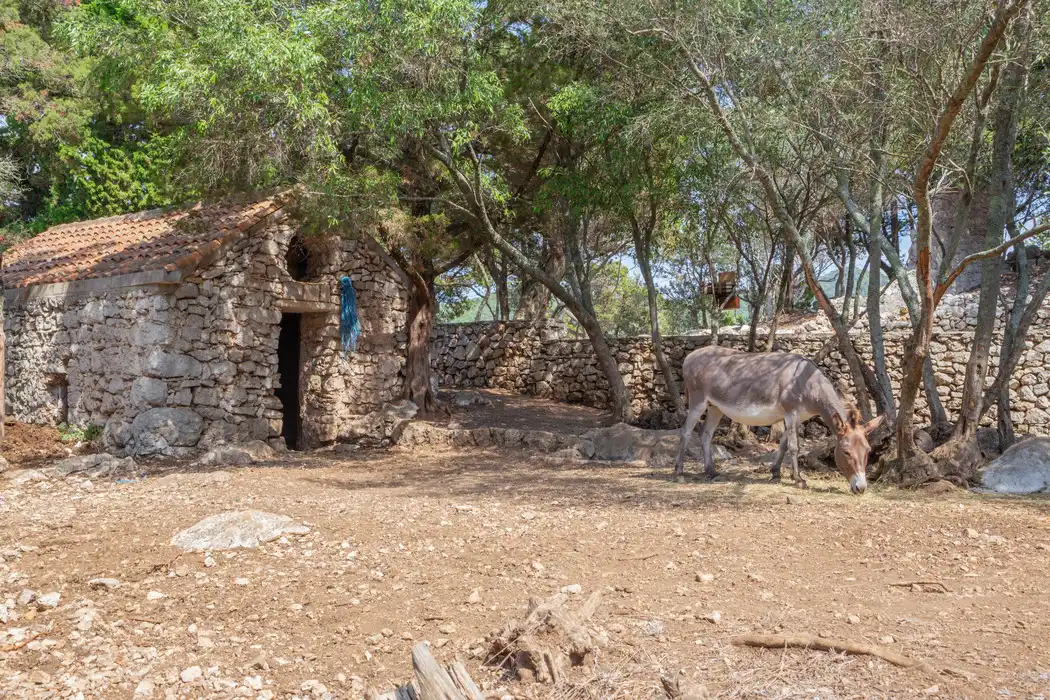
On Mljet, don’t miss out on visiting the scenic Odysseus Cave on the coast. Visitors can choose to either swim through the cave or jump into the waters from the nearby rocks – with caution, of course!
While inside, you can see the sea in a beautiful neon blue – created by the sun’s reflection on the sea floor, which filters through the water.
Above the Odysseus Cave, you can also find the Kalypso bar and a peculiar little postbox to which visitors can use to send postcards
18. Lokrum Island
Just 600m off the coast of the Old Town of Dubrovnik is Lokrum Island, a true hidden gem along the Adriatic Sea. The tropical island is often a second thought in everyone’s Dubrovnik plans, but it leaves an instant impression on those who choose to visit.
Lokrum Island is under UNESCO protection, which enhances its peaceful nature since no cars are allowed. You can explore all corners of the island in peace.
On your exploration of Lokrum, you’ll find various attractions that are diverse and captivating. The Benedictine Monastery is the island’s main attraction, a 12th-century monastery complex that includes a cloister garden, ruins and a nearby botanical garden featuring various exotic plants across the world.
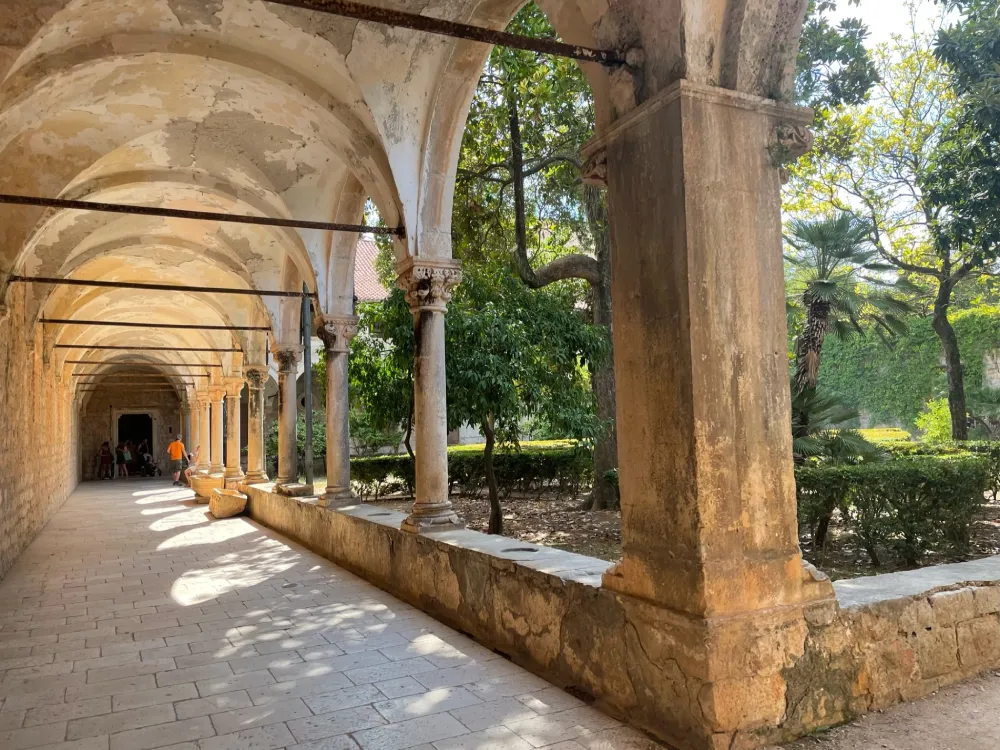
Benedictine Monastery was another Game of Thrones location filmed in Dubrovnik, doubling down in Season 2 as the city of Qarth. Inside is the visitor centre, where an exact replica of The Iron Throne can be found.
Be sure to take your snapshots as the new King or Queen of Westeros!
Lokrum is also renowned for its coastal beauty with plenty of relaxing beaches and areas to soak up the sun. Be sure to head to The Dead Sea, a small saltwater lake that is perfect for a dip to cool down from the Mediterranean heat.
The cool feature of the lake is that the salt concentration is so high that visitors can simply sit and float in the water.
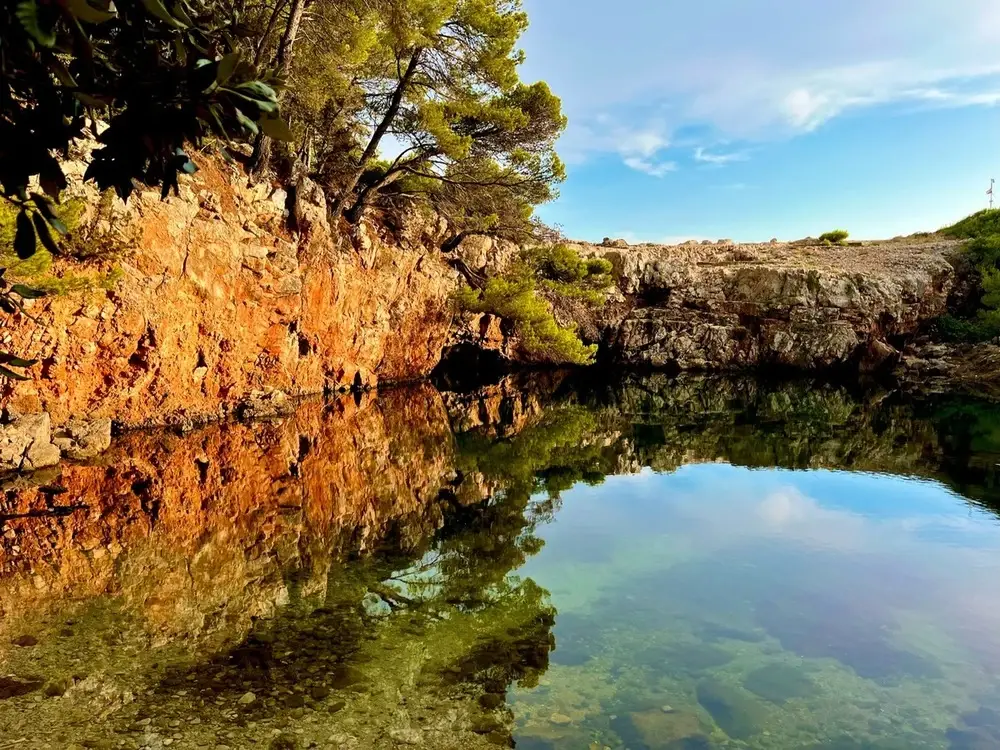
While Lokrum doesn’t have human inhabitants, it doesn’t shy away from attracting the most unique wildlife. Its main resident, the wild peacock, can be seen everywhere – even joining you at your dinner table.
To cap off your day at Lokrum, be sure to hike up to Fort Royal, a fortress built on the island by the French during the Napoleonic Era to assert their dominance in the region.
Fort Royal is the highest point of Lokrum Island and is strenuous to reach. Climb the long, steep path up to the Fort and enjoy a beautiful panorama overlooking the Adriatic Sea with a backdrop of Dubrovnik in the far distance.
Visiting from Dubrovnik? Check out my Lokrum Island Guide
Most beautiful natural sites in Croatia
19. Plitvice Lakes National Park
The Plitvice Lakes National Park is the ultimate crown of beautiful natural sites in Croatia, recognised as a UNESCO World Heritage Site in 1979 and known as Croatia’s first-ever national park.
But what should you expect when visiting?
The park’s area is expansive, covering over 300 square kilometres of area with various walking trails winding around 16 interconnected lakes, divided into Upper and Lower Lakes.
The trails pass over 90 cascading waterfalls, 32 caves and through various dense woodlands.
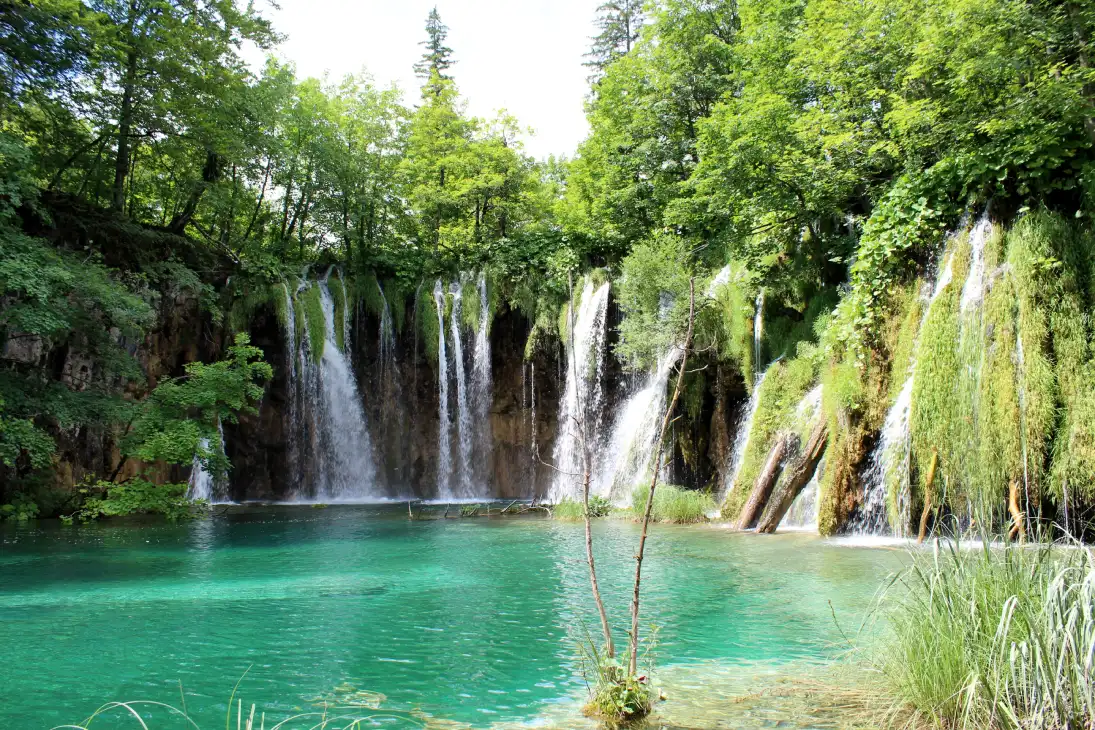
Note: Plitvice is located in a secluded area of Croatia with limited public transport options. I recommend visiting by car rental or via a day tour, with options available from cities like Split.
There are various entrances to Plitvice, marked out with several walking trails. Visitors can choose between routes A, B, C, and K.
Route A is the shortest, a 2-3 hour trail that goes along the lower lakes, seeing some of the most beautiful waterfalls in Plitvice like the Great Waterfall and Sastavci Waterfalls. Route C covers most of the park whereas Route K covers Plitvice in its entirety, taking over 7 hours to complete.
Route B is the most recommended choice. Just like route A, you will visit the most popular areas of Plitvice. As a bonus, route B includes a boat ride across Lake Kozjak, a scenic lake within the national park!
20. Krka National Park
Krka National Park is an expansive area of 109 km, comprising a series of waterfalls along the Krka River. Although not as revered as Plitvice, Krka is much more accessible, centred perfectly in the Dalmatian region and a short drive from major cities like Šibenik and Split.
Krka National Park is home to over 800 series of plants, unique wildlife, historic sites and two major waterfalls, Skradinski Buk and Roški Slap.
Skradinski Buk is Krka’s most popular, mainly due to its grandeur. The waterfall is formed through several cascading falls, with its peak height reaching over 12km.
Visitors can get to Skradinski Buk from the main entrance or by taking a boat from Skradin across the Krka River and walking a few minutes from the drop-off point.
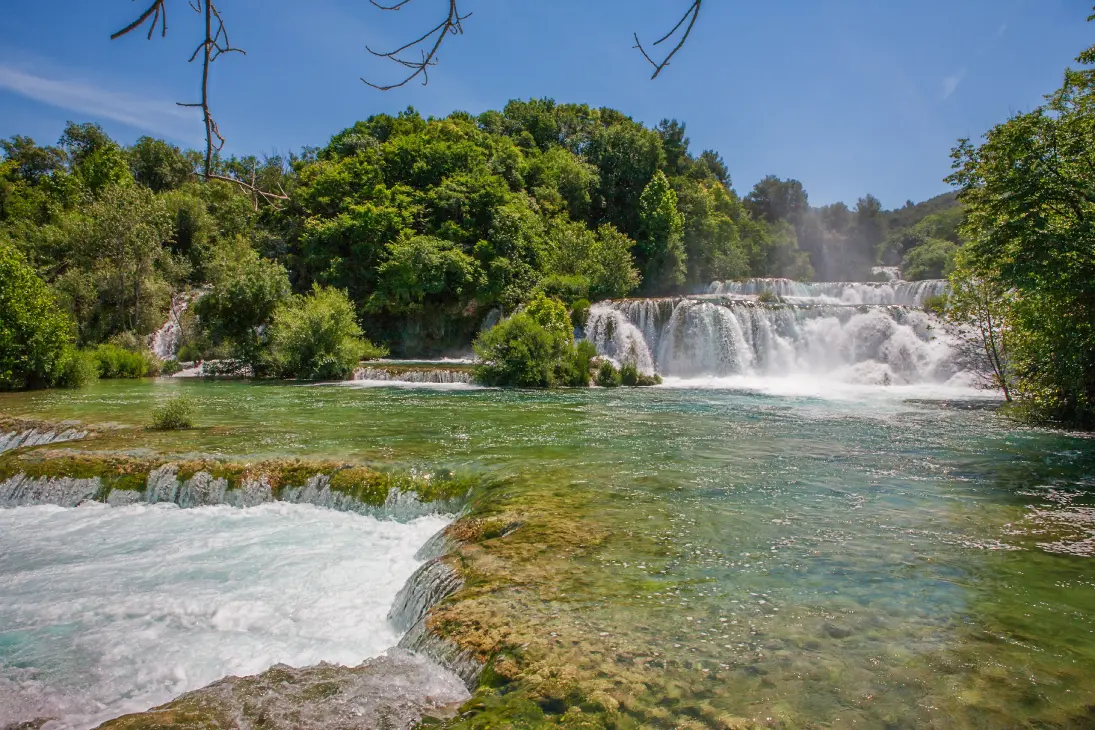
Roški Slap is Krka’s second major waterfall, formed by countless cascades with the highest drop being 22.5 metres high. It is located in a more secluded area in Krka, 30km away from the main entrances of Skradin and Lozovac.
You can explore the waterfalls via various hiking trails or by taking a boat trip from Skrandinski Buk, which includes a trip to Visovac Island on your journey.
A big advantage of Roški Slap compared to Skradinski Buk is that you can swim its emerald green waters, so be sure to bring your swimming gear if you plan to visit!
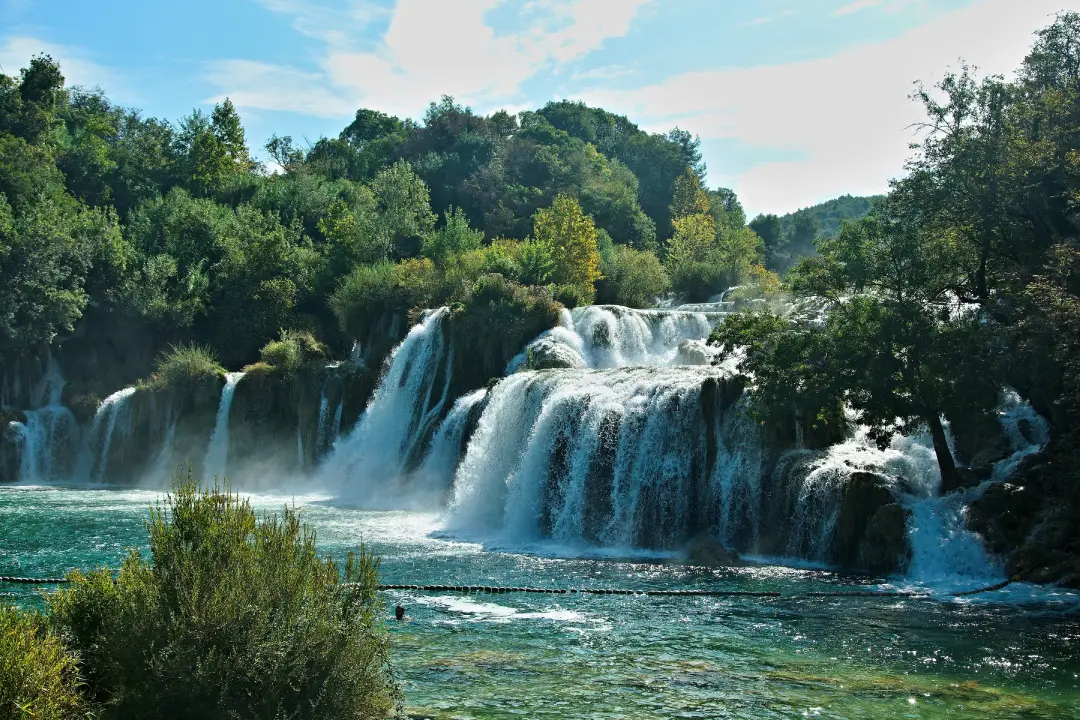
21. Biokovo Nature Park
Situated in the Dalmatian region, moments away from Makarska town, is the mountainous landscapes of Biokovo Nature Park, a real hikers haven.
Second to Dinara Mountain, Biokovo is Croatia’s second-highest mountain range. It can be easily explored by car or by foot through various long hiking trails, all of which reward you with beautiful views of the Dalmatian coastline along the Makarska Riviera.
If you’re feeling adventurous, you can ascend the nature park’s 1,764m high mountain peak, Sveti Jure, starting the trail from the village of Veliko Brdo in Makarska.
It takes over 7 hours to complete, so it is recommended only for avid hikers!
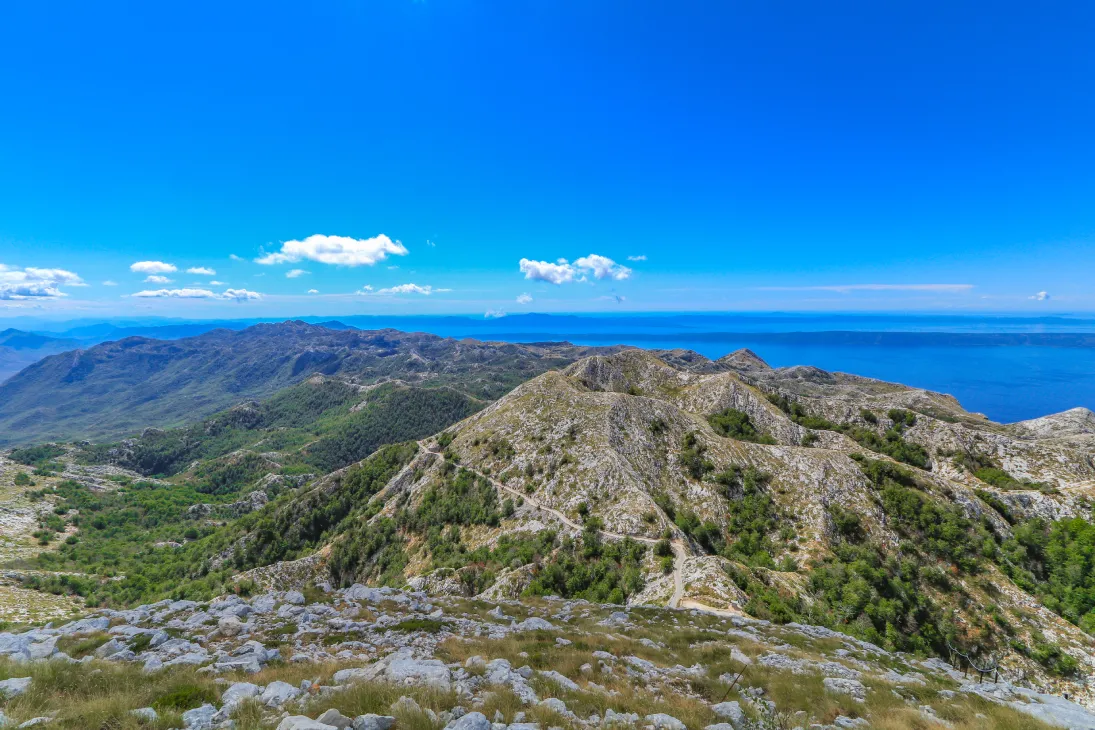
In Biokovo Nature Park, you can find many attractions like the Skywalk Biokovo and Botanical Gardens. The Skywalk Biokovo is the best way to see the nature park in all its glory.
Walk along a glass-bottomed platform suspended over 1,228 meters high and enjoy incredible views over the Biokovo Mountains with the backdrop of the Adriatic Sea.
You can hike, drive or take an electric tuk-tuk tour from Makarska to Skywalk Biokovo. A tuk-tuk tour is the most convenient option and provides a chance to head here during sunset and get those dreamy sunset views!
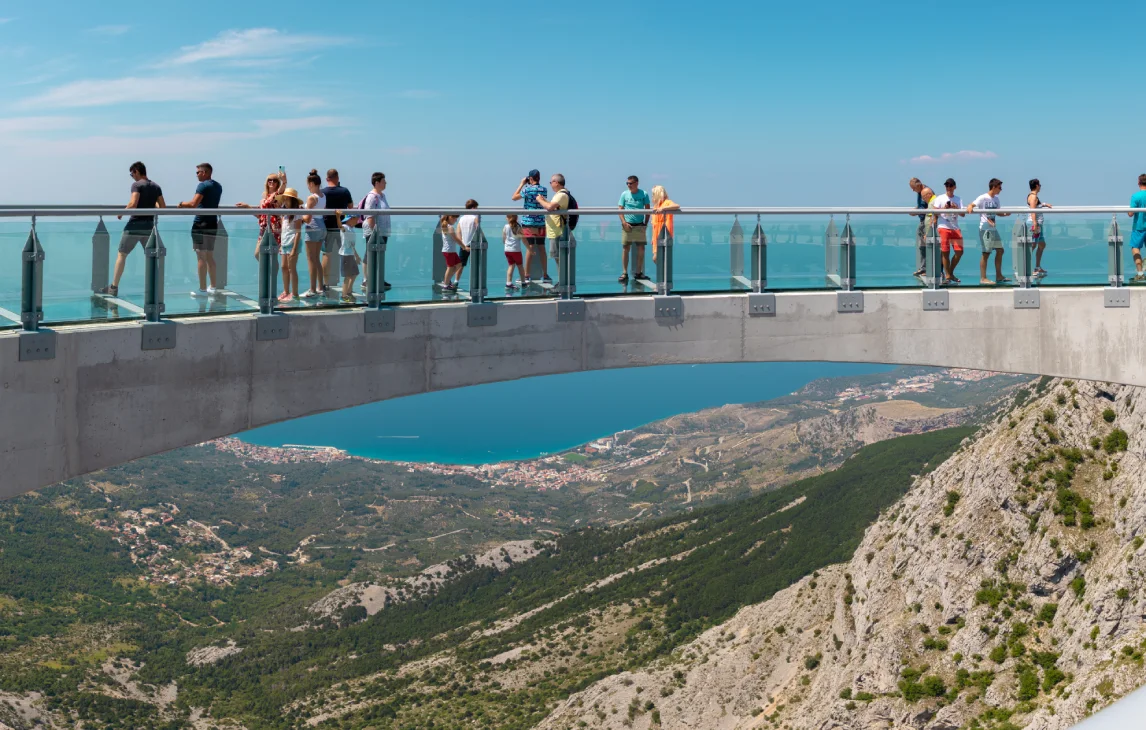
Recommendation: Be sure to visit on a clear day, as the clouds will block your view if they are out.
Map of the most beautiful places in Croatia
To help you best find and navigate these amazing places in Croatia, I’ve created an interactive map that you can use to organise your Croatian itinerary.
Final Thoughts
And there you have it! 21 of the most beautiful places to visit in Croatia to add to your itinerary.
As you can see, there’s so much to do and explore in this diverse country that it might feel overwhelming to choose your next destination.
But I hope this guide helps you make the right choice about which Croatian destination is best for your dream holiday. The most important thing is that wherever you do choose, you certainly won’t be disappointed.
Check out my other Croatia-related posts:
Ultimate Guide to the Best Day Out: From Dubrovnik to Kotor
A Dubrovnik to Bosnia Day Trip: An Ultimate Guide
PLAN YOUR TRIP TO CROATIA
Croatia Flights – Looking for cheap flights to Croatia? I’ve used Skyscanner countless times during my travels. It will scan the whole internet for prices on flights from all airlines, so you can find the best deal on your flight!
Croatia Travel Insurance – Do I need travel insurance for Croatia? Yes of course! I always get travel insurance in case anything happens during my travels. I highly recommend SafetyWing to help you find the best travel insurance.
Croatia Rental Cars – Should I rent a car in Croatia? Definitely! I’ve rented a car to travel around Croatia multiple times. It’s definitely the most convenient way to get around. Discover Cars is my go-to rental agency and offers the best rates wherever you travel.
Croatia Hotels – Need to find accommodation in Croatia? I’ve been booking all my hotels through Booking.com for years. They have a large range of different accommodation options to suit all travel styles. Plus, their loyalty discounts are a huge bonus!
Croatia Tours/Activities – For your tours or activities in Croatia, I couldn’t recommend GetYourGuide enough! I use it everywhere I go, and it is brilliant for thinking of ideas of things to do.
Croatia Phone Plans – If you need phone data for your travels around Croatia, I recommend getting an eSim using Airalo. It’s been my saviour! It offers affordable roaming with great coverage. You can download the sim straight from their app and top it up whenever you want.
